What is personalization at scale? (and how to achieve it)
While personalization has been around for a long time, today’s martech solutions have made it more prevalent and accessible than ever. This brings both benefits and challenges for marketers.
Updated on 23 Aug 2025
On the one hand, it’s easy to implement basic personalization tactics, like adding someone’s name, birthday, or last visited product to an email. On the other hand, customers have gotten used to these tactics and are expecting brands to deliver a completely individualized experience across all channels.
Marketers also face other obstacles in this regard, like:
- The impending elimination of third-party cookies.
- The vast volumes of customer data that’s typically siloed off in different tools.
- The difficulty in building, analyzing, and optimizing personalization campaigns across different channels and ensuring a consistent brand experience.
This makes personalization at scale — i.e., across thousands of users, different channels, and customer lifecycle stages — incredibly difficult.
In this guide, you’ll learn how to overcome the challenges of personalization at scale. We’ll also explore examples of large brands that managed to implement successful personalization techniques using Insider — our enterprise marketing platform for creating individualized, cross-channel customer experiences.
Insider helps companies like Adidas, Philips, Allianz, GAP, and Lexus implement personalization at scale across their websites and mobile apps, as well as channels like email, push notifications, SMS, WhatsApp, and more.
Visit our website or schedule a demo with our team to learn how Insider can benefit your business as well.
Personalization at scale: Definition, benefits, and examples
Personalization at scale is the process of using reliable data — like purchase histories, on-site actions, and survey responses — to deliver individualized experiences to a large number of customers across different channels.
You can find examples of personalization at scale across industries and businesses. For example:
- eCommerce stores (like Amazon) show different products to each individual visitor based on their browsing and purchase history.
- Online streaming services (like Netflix) suggest different shows and movies based on what viewers have previously watched and searched for.
- Brands with strong digital and physical presence (like Disney) deliver individualized experiences offline based on what customers have shown interest in online (or vice versa).
When it involves multiple online and offline channels, the process of individualizing the customer experience is also referred to as omnichannel personalization. To do it successfully, teams need the right martech infrastructure to:
- Unify their customer data.
- Segment and analyze their audiences.
- Build, launch, and automate personalization campaigns.
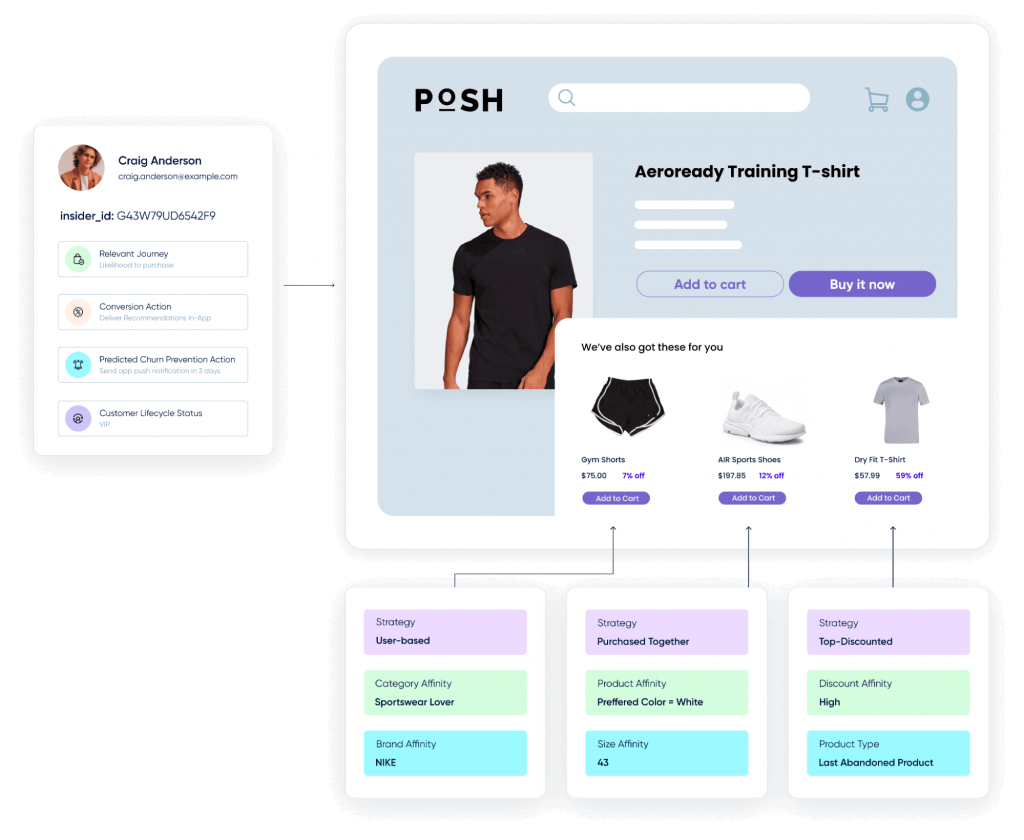
The benefits of personalization at scale include:
- Higher conversion rates, as more customers are willing to buy products and services that are relevant to them.
- A more engaged customer base due to the experience being tailored to fit each person’s needs, interests, and preferences.
- Higher customer lifetime value (CLTV), retention, and long-term loyalty, as customers feel like the brand understands what they’re looking for and won’t waste their time with irrelevant offers.
How to make personalization work at scale
While commonly used, personalization tactics can be very difficult to implement, especially at scale. Below, we’ll explore a three-step process for doing so that has worked for many of our clients.
1) Set the foundation with unified customer data
Just like you can’t build a house without a solid foundation, you can personalize successfully without reliable customer data. The problem is that for many brands, that data is scattered across disconnected systems, like CRMs, CMSs, point solutions (e.g., email marketing software and push notification tools), legacy systems, and so on.
This prevents marketers from getting a clear understanding of their customers. It also hides key insights from them that should be factored into the decision-making process when building personalization campaigns.
That’s why the first step to successful personalization at scale is to integrate your customer data.
There are different ways to do so but perhaps the most popular one is to use a customer data platform (CDP). CDPs are solutions built specifically for aggregating customer data from online and offline sources into a single unified database.
For example, Insider comes with a built-in CDP that can aggregate data from:
- CRMs like Salesforce, Pipedrive, and Microsoft Dynamics CRM.
- Point solutions like Mailchimp, ActiveCampaign, and Constant Contact.
- Analytics and attribution platforms like Mixpanel, Amplitude, and AppsFlyer.
- Marketing automation tools like Adobe Marketo and Pardot.
- Live chat software like Drift and Intercom.
- And many other popular SaaS solutions.
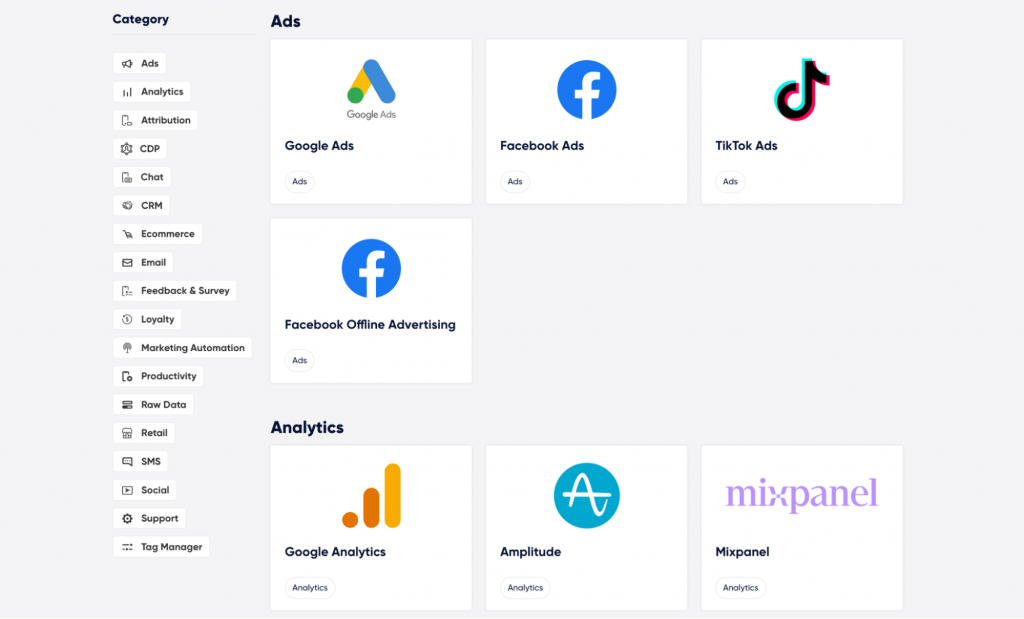
Using this data, our CDP can resolve omnichannel identities into detailed 360-degree customer profiles, like the one shown below. These profiles contain everything you need to make data-driven decisions and build successful personalization campaigns, including:
- Demographics.
- Purchase history.
- Channel reachability.
- Last purchased and abandoned products.
- Predictive characteristics, such as likelihood to purchase or engage on a channel.
- Interactions with the site, mobile app, or channels like email, SMS, and push notifications.
- Survey responses (and other first-party data).
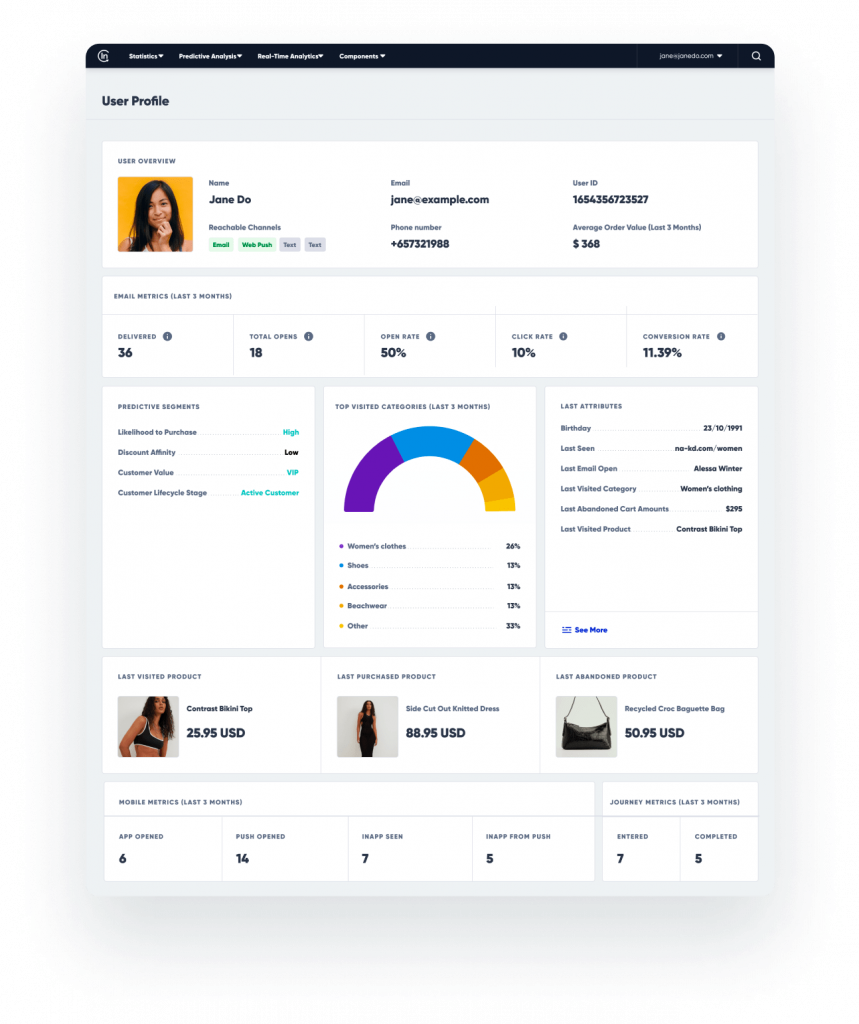
At the same time, you don’t need as much information to get started with personalization.
You can start by using only a few key data points — like website actions, purchase and browsing history, and location — to create successful personalization campaigns. The rest of the data can be aggregated over time as you start to generate results.
You also don’t need to limit your personalization efforts to leads and known customers.
For example, Insider’s CDP also creates 360-degree profiles of website visitors who haven’t shared any contact information with you. These profiles don’t contain contact information but still have essential insights into what visitors are browsing, which attributes they’re interested in (e.g., prices, colors, sizes), and which products they add to their carts.
This enables you to implement anonymous visitor personalization by:
- Tailoring your website content, messaging, and product recommendations in real-time.
- Engaging anonymous visitors and bringing them back to your site with personalized web push notifications.
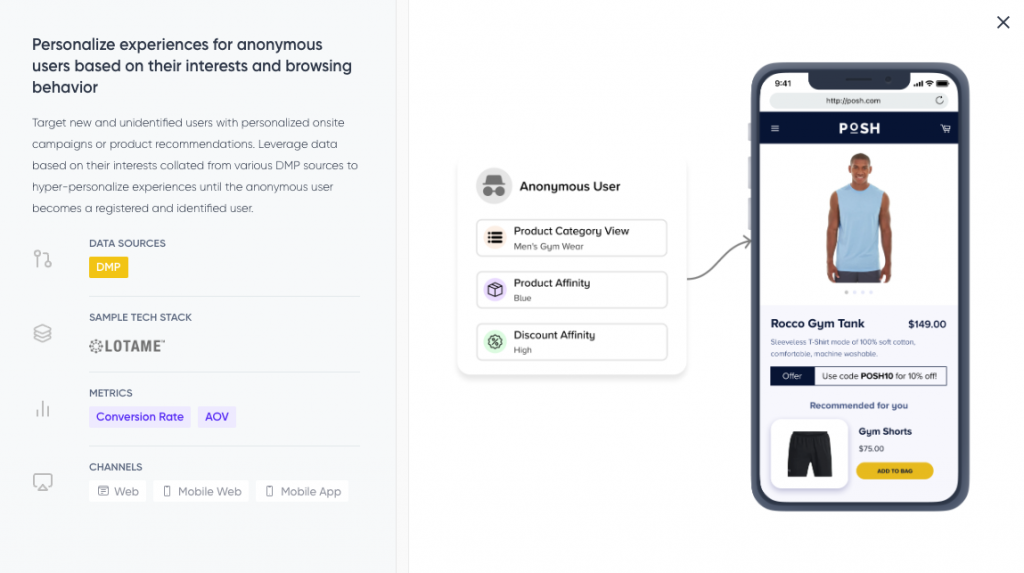
Put simply, unifying your customer and anonymous visitor data lays the foundation for successfully implementing personalization at scale across first-time visitors, anonymous users, leads, and known customers.
2) Deliver personalized content, messaging, and product recommendations
Besides reliable data, personalization requires the necessary tools to activate that data across channels and for different use cases. Companies often use a plethora of solutions for that purpose, like:
- Website personalization software.
- Email marketing platforms (most of which have at least some personalization features).
- Different channel-specific tools for SMS, WhatsApp, online ads, push notifications, and other channels they’re using.
While this approach can work, it also has significant downsides. It forces marketers to juggle together a bunch of different tools, each with its own UI, credentials, and learning curve. It can also lead to very expensive and hard-to-track martech stacks, as each tool has its own pricing and renewal periods.
The alternative approach is to use a unified marketing platform that combines these personalization tools and channels in one place. For example, Insider can unify your customer data and enable you to personalize your customer experience across 12+ channels — including your website, mobile app, email, SMS, WhatsApp, and more.
Website and mobile app personalization
Website personalization can take many different forms. Content, messaging, and product recommendations can all be tailored to each individual visitor, which helps create a more consistent customer experience and maximize conversion rates.
Insider’s Web Personalization Suite is built to tailor all on-site elements based on users’ needs, interests, and preferences, including:
- Banners.
- Categories.
- Product recommendations.
- And more.
For example, you can use our versatile product recommendation engine to match every visitor with personalized products. You can also choose from a variety of personalization strategies, including viewed together, recently viewed, purchased together, location-based top sellers, checkout recommendations, purchased with last purchased, and more.
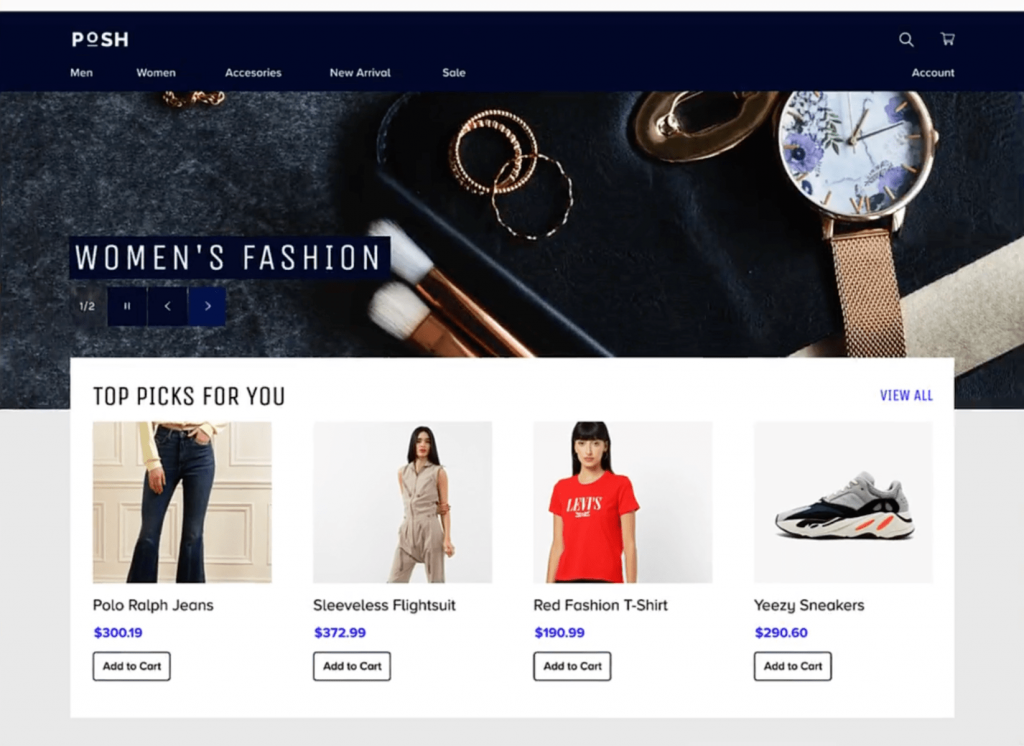
It’s also easy to create product recommendation widgets using a simple drag-and-drop editor. This means you can implement personalization strategies across your site without needing constant IT support.
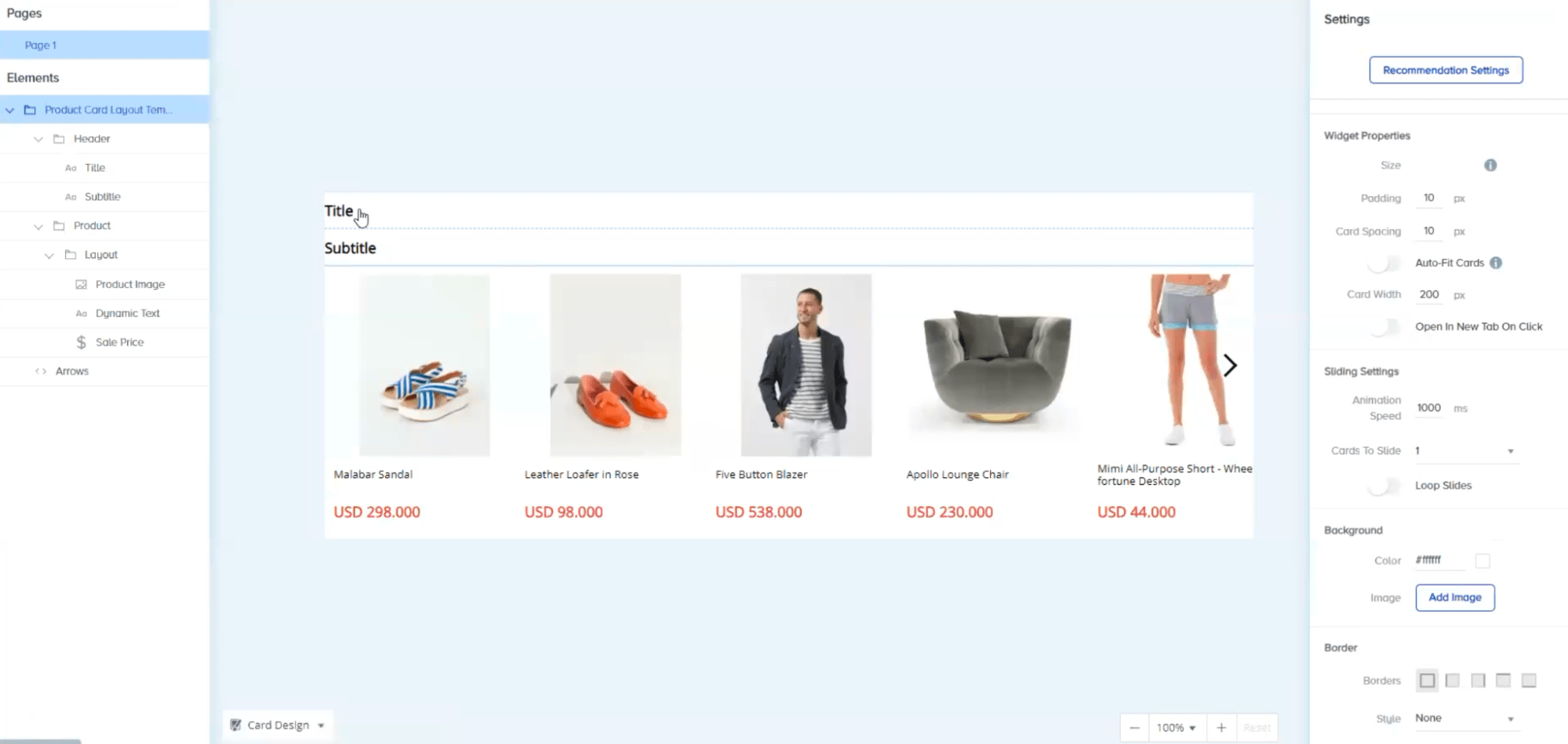
Templates are also essential in that regard. Regardless of the personalization solution you’re using, you need to have proven, easily customizable templates in order to quickly launch and optimize personalization campaigns without a heavy reliance on technical teams.At Insider, we offer a plethora of templates for various use cases, like generating leads via gamification, adding social proof, displaying purchase progress bars, and much more.
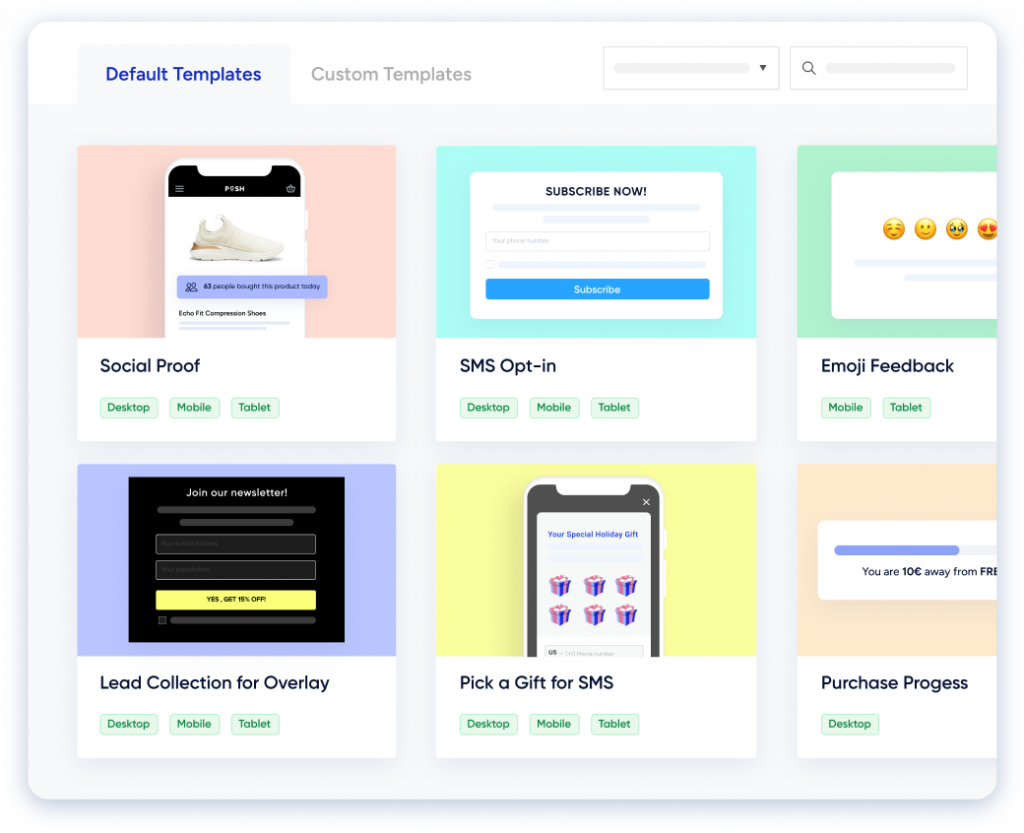
Besides content, messaging, and product recommendations, there’s another key element of the on-site experience that must be personalized — site search results. This is especially true for eCommerce stores where many potential customers bounce due to poor product discovery.Again, this is something we offer at Insider via Eureka — a site search and personalization tool powered by artificial intelligence (AI). This tool delivers personalized search results to every shopper and lets you improve the overall search experience with advanced faceting filters based on product attributes (price, category, brand, ratings, etc.)
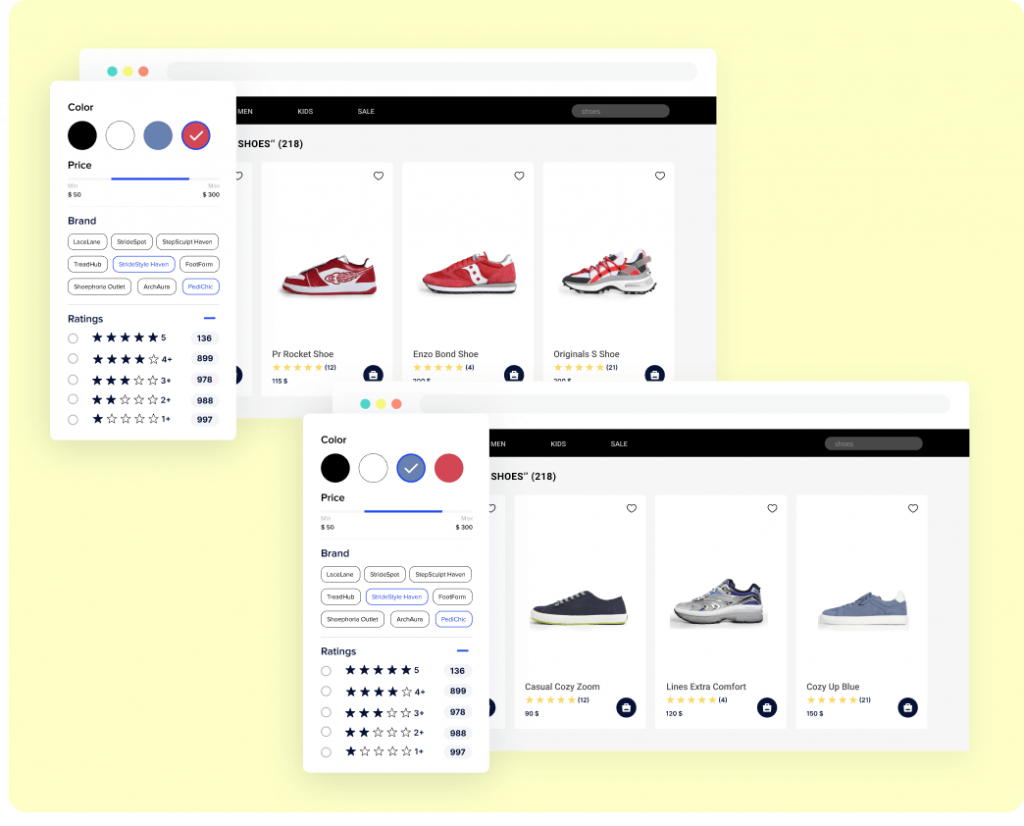
Omnichannel personalization
Tailoring your website and mobile app is essential but not enough to create a truly personalized customer experience. For that, you also need to individualize every other customer interaction with your brand.
This depends entirely on the channels you’re using. Established brands use a mix of touchpoints, usually including email, a messaging channel (or a combination), and online ads to reach their audiences.
Insider lets you reach customers on these (and other touchpoints) with a personalized approach based on your unified data. For example, you can use Insider to personalize your:
- Emails. You can go beyond standard email personalization (e.g., using a customer’s name or birthday) by extending your product recommendations to your email campaigns. AMP emails can help you exceed your customers’ expectations with interactive, web-like experiences that enable them to mix and match products, answer surveys, make reservations, and much more right inside your emails.
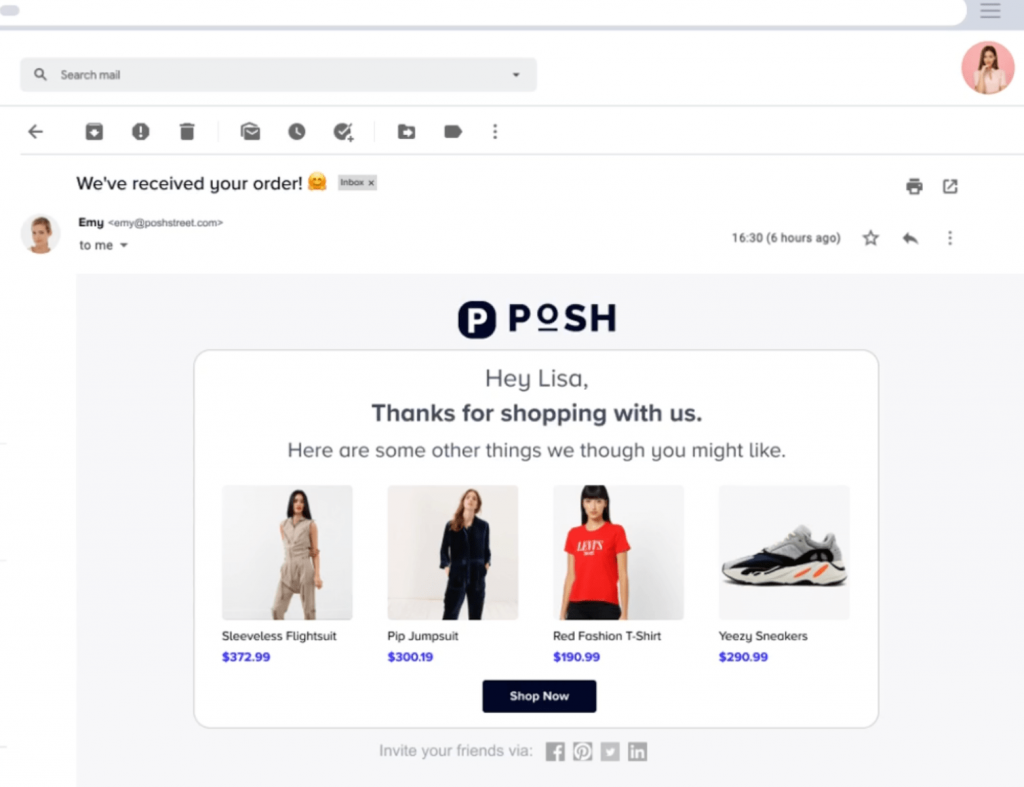
2. Messaging channel communications. You can reach customers via channels SMS, WhatsApp, Facebook Messenger, and LINE. Again, all your communications can be personalized based on your unified customer data. For example, you can use these channels to cross-sell items that are frequently sold with ones customers have already bought, send them relevant price drop alerts, remind them about events they’ve signed up for, and much more.
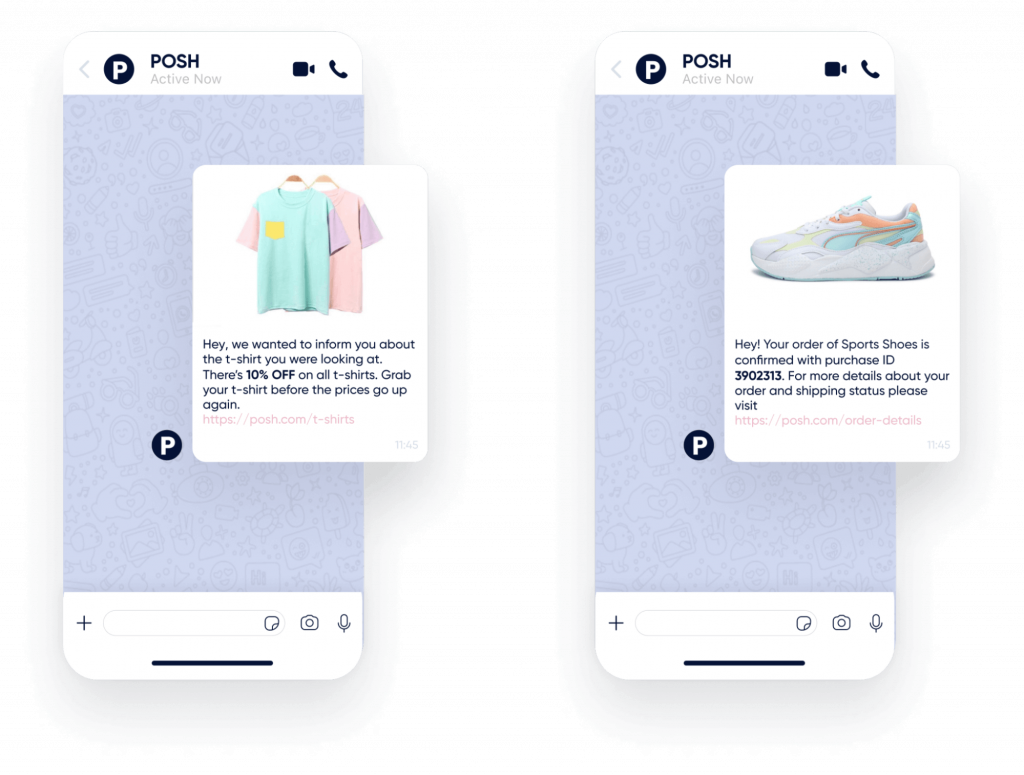
3. Online ads. Insider lets you build detailed customer segments and target them with personalized ads based on their interests and preferences across Google, Facebook, Instagram, and TikTok. Pierre Carding used this strategy to achieve a 67% reduction in cost per acquisition, a 445% conversion rate uplift, 164% boost in return on ad spend.
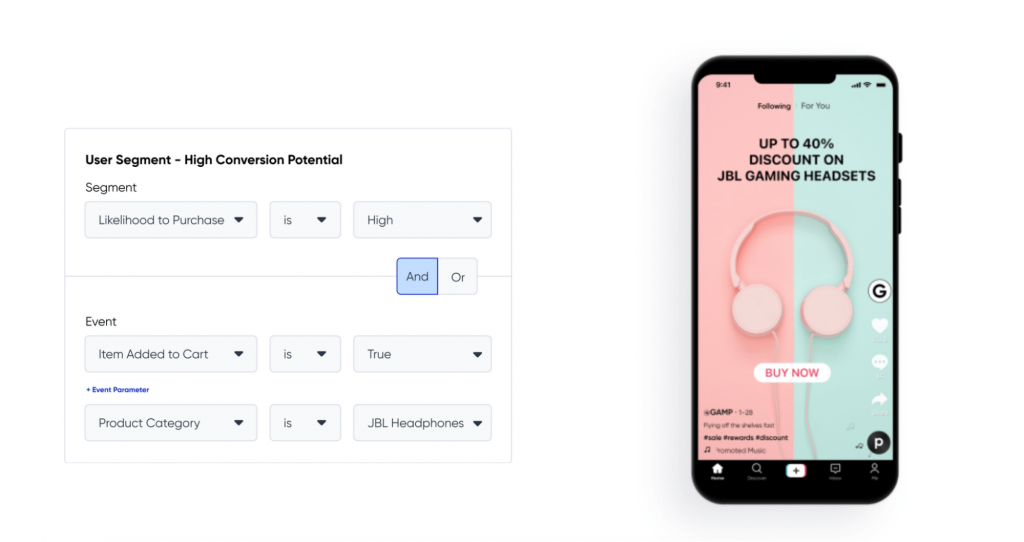
If you want an example of a company that implemented personalization at scale across various channels, check out our case study with NA-KD. This fashion increased CLTV by 25% and achieved a 72x ROI in 12 months by creating personalized customer experiences across:
- SMS.
- Email.
- Push notifications.
- Website and mobile app.
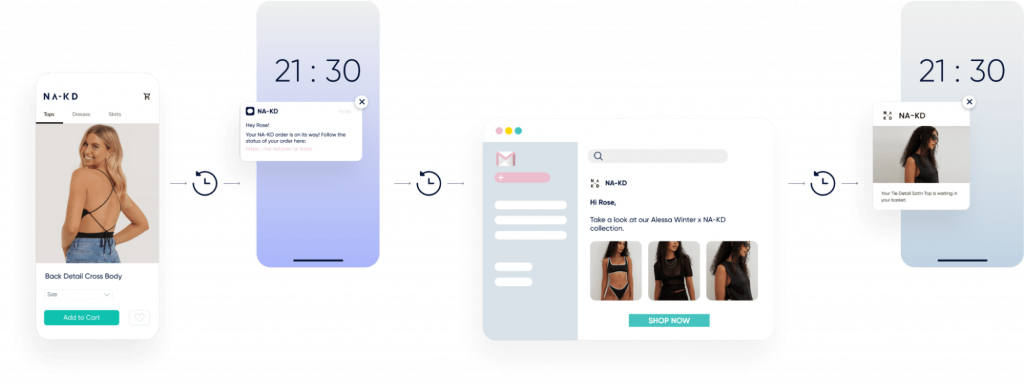
3) Maximize the potential of AI, machine learning, and marketing automation
As you can, there’s a lot that goes into successful personalization across a large customer base and different channels. That’s why it’s so important to utilize the full potential of today’s martech solution in terms of:
- AI and machine learning technologies, which can analyze vast amounts of data to automatically deliver relevant content and products (as we showed earlier), help you create campaigns and even optimize their performance.
- Marketing automation, which can take a lot of the heavy lifting off your shoulders when it comes to running lifecycle marketing campaigns aimed at maximizing customer loyalty, retention, and CLTV.
Customer journey builders are invaluable in this regard. These solutions are built to unify the touchpoints customers have with your brand into a cohesive experience. They also enable you to build and automate complex campaigns using no-code drag-and-drop editors.
For example, Insider’s Architect is a customer journey orchestration solution that helps brands deliver personalized, timely, and relevant experiences for all customers and across all touchpoints.
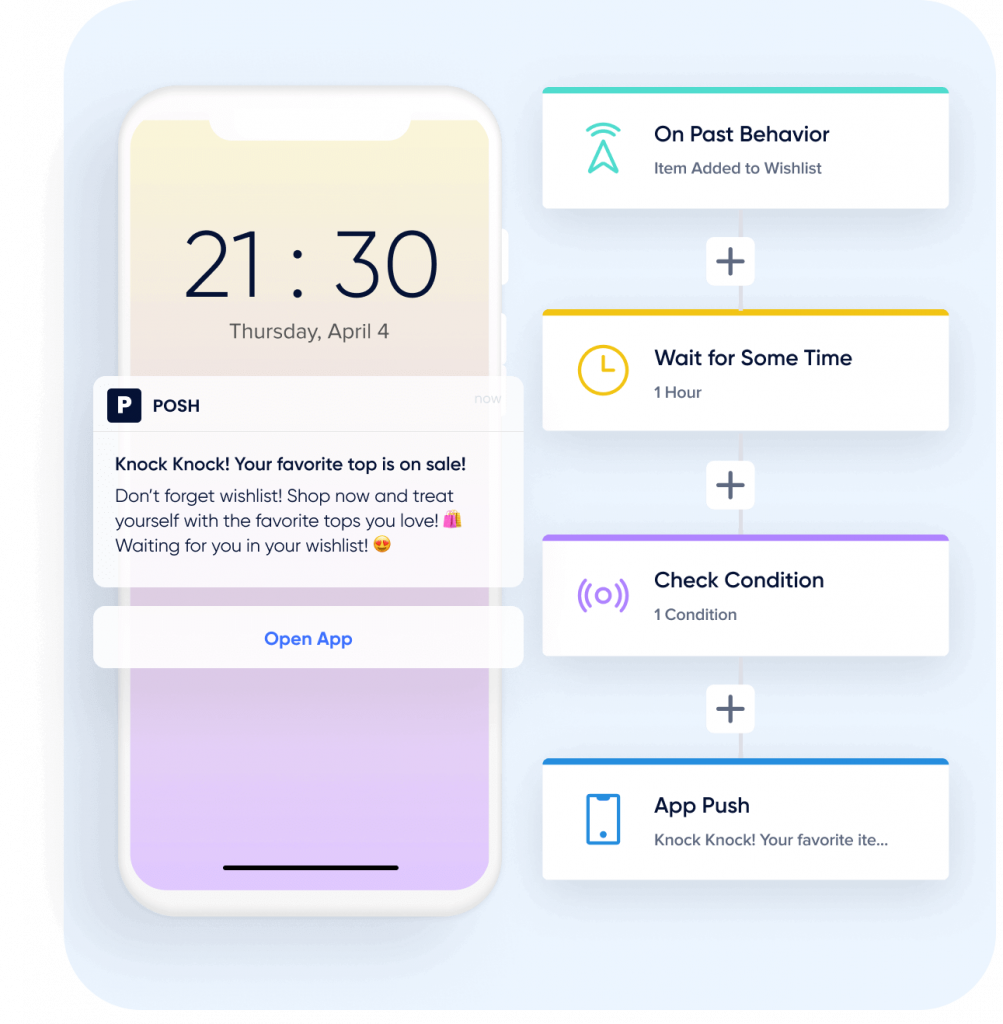
Here are some of the key ways Architect can help you personalize your omnichannel campaigns and work more efficiently.
Optimal send times and relevant channels
The Send-Time Optimization (STO) feature automatically triggers each message at the time the recipient is most likely to engage with it. It does that by analyzing each recipient’s behavioral patterns using our AI algorithms.
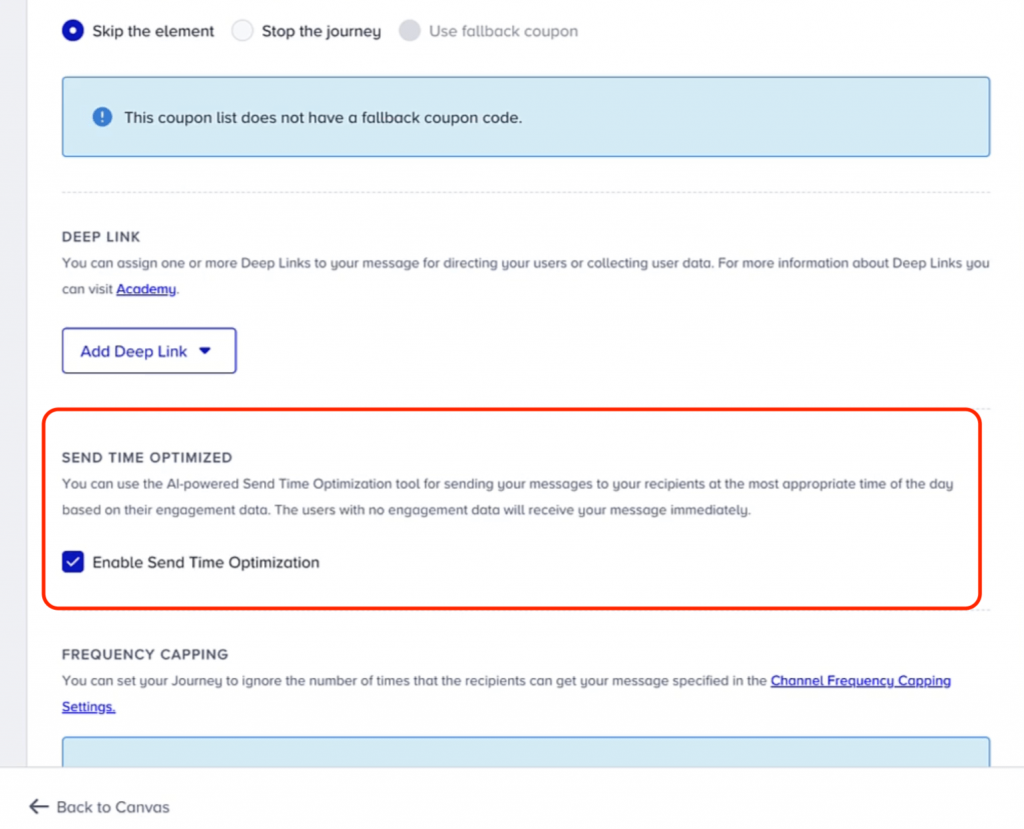
Insider’s Next-Best Channel predictions help you uncover the best touchpoint to contact each customer. All you have to do is add your channels in our customer journey builder and this feature will automatically analyze customers’ past behaviors to determine the optimal touchpoints.
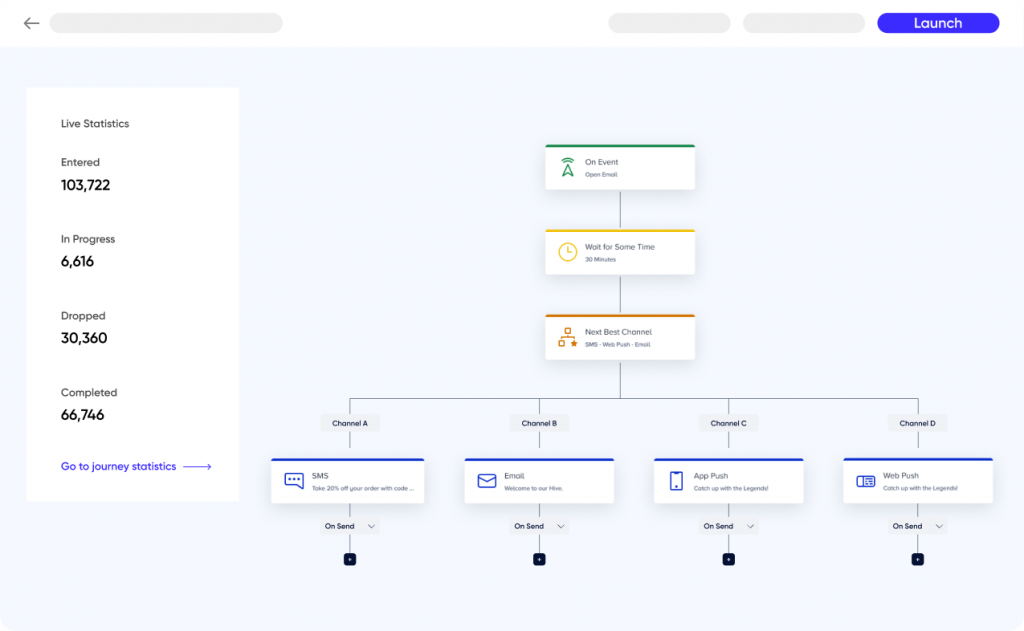
This is a powerful capability, especially when you’re not sure how to continue a journey or campaign beyond a certain point.
AI-powered A/B tests at scale
Insider comes with built-in A/B testing that lets you compare:
- Subject lines.
- Website elements.
- Body copy and images.
- Channels and journey flows.
- Any other elements in your omnichannel personalization campaigns.
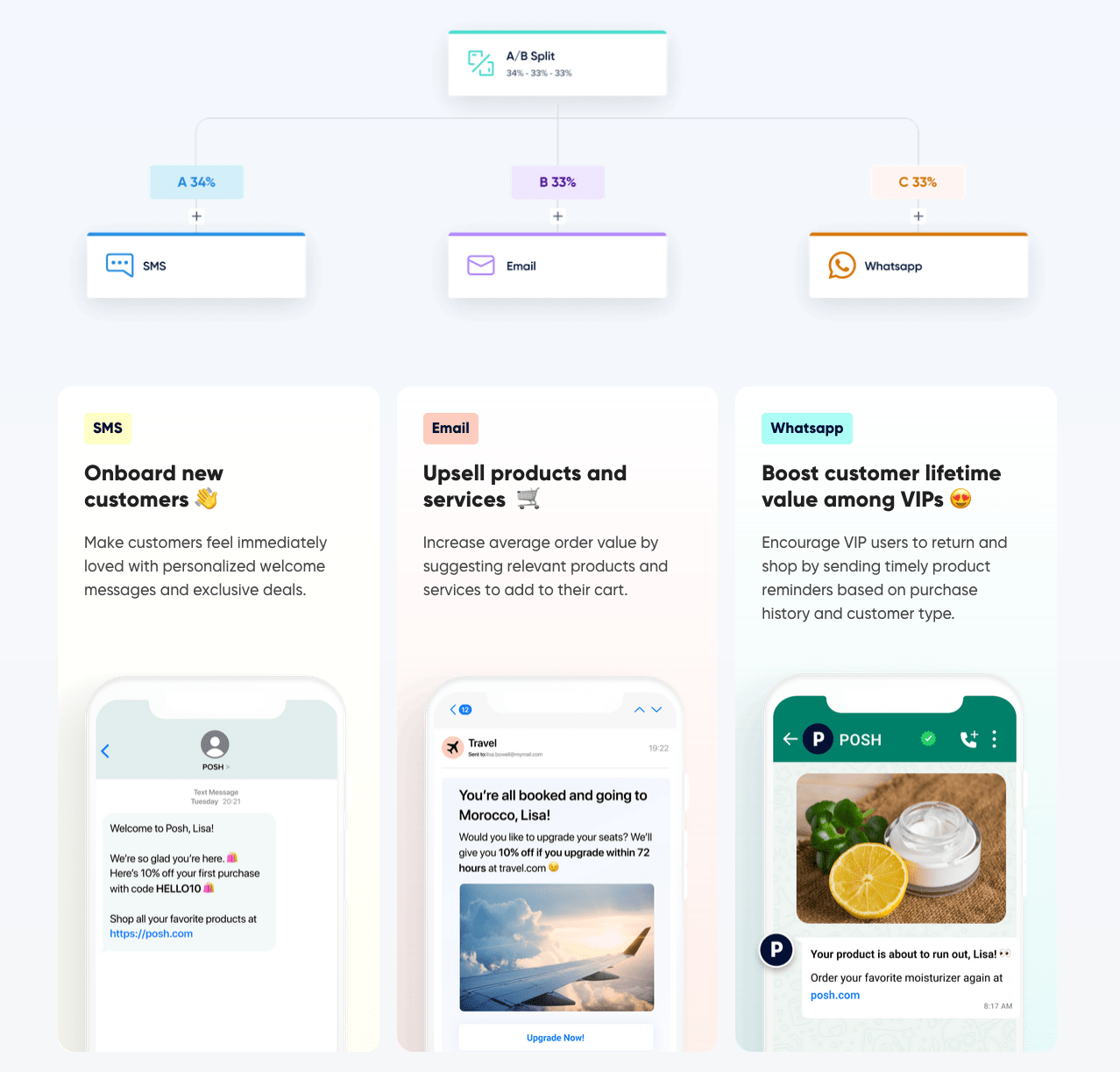
At the same time, we know that scaling A/B tests beyond a certain point can get very time-consuming. Not only do you have to set up the experiments but you also need to analyze their results and make changes accordingly.
That’s why we built A/B Test Winner Auto-Selection — an AI-powered feature that automatically optimizes each experiment by guiding users to the winning variant. All you have to do is:
- Choose a duration for the experiment to run.
- Select a winning metric, like open rates, conversions, or revenue.
After the duration, Insider will begin guiding users to the winning path, so you can be sure that the necessary improvements are made without needing to manually adjust each test.
Bonus: Fast segment, journey, and content creation
Segmentation is another crucial piece of the personalization process. Without finding the right customers to target, your personalization campaigns won’t be as effective as possible.
However, the process of building segments by combining different characteristics can be time-consuming. Fortunately, with Insider you can simply provide a text prompt with your end goal (e.g., driving purchases, reducing churn, or increasing CLTV) and our Generative AI will create the segment for you.
You can then further enrich or tweak each segment (or provide a different prompt altogether) using 120+ traits and characteristics across three different audience types:
- Standard, like devices, locations, and operating systems.
- Predefined, like leads, cart and browser abandoners, and mobile app users.
- Predictive, like the likelihood to purchase or engage on a specific channel, discount affinity, and spending potential.
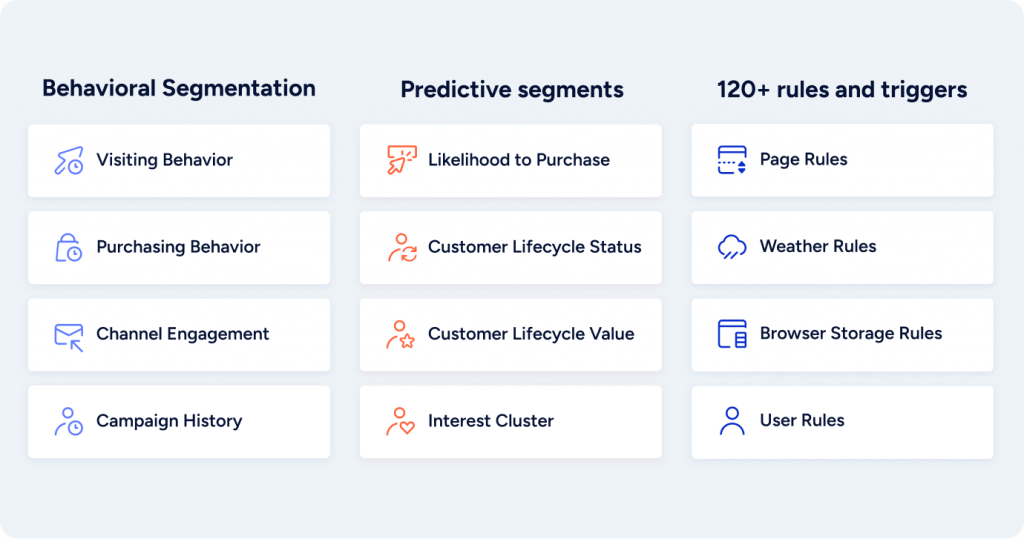
Insider’s Generative AI can also create campaign copy and images for you. Again, you just have to provide the end goal, whether that’s driving customer engagement, revenue, or any other key metric.
For more details into Insider’s AI capabilities, check out Sirius AI — our patent-pending solutions that combine generative, predictive, and conversation AI to help marketers work more effectively and personalize their digital experiences at scale.
The power of personalization at scale (3 examples)
Lastly, we’ll round out this guide by showing how three brands implemented personalization at scale (and across channels) using Insider. We’ll also discuss the results their marketing efforts yielded in terms of revenue and ROI.
1) How Adidas increased AOV by 259%
Adidas is a German multinational corporation founded in 1949 and headquartered in Germany. It’s the largest sportswear manufacturer in Europe and the second-largest in the world.
During the COVID-19 lockdowns, their website traffic skyrocketed. However, they weren’t prepared to engage and retain those extra visitors, which is why they decided to partner with Insider.
Specifically, they wanted to improve their customers’ online experience and increase conversion rates by delivering highly personalized experiences at scale. To do that, they took advantage of Insider’s AI-powered personalization solutions.
First, they used Insider to build highly targeted segments of new and returning visitors. They then targeted them with different side menu coupons like the one shown below.
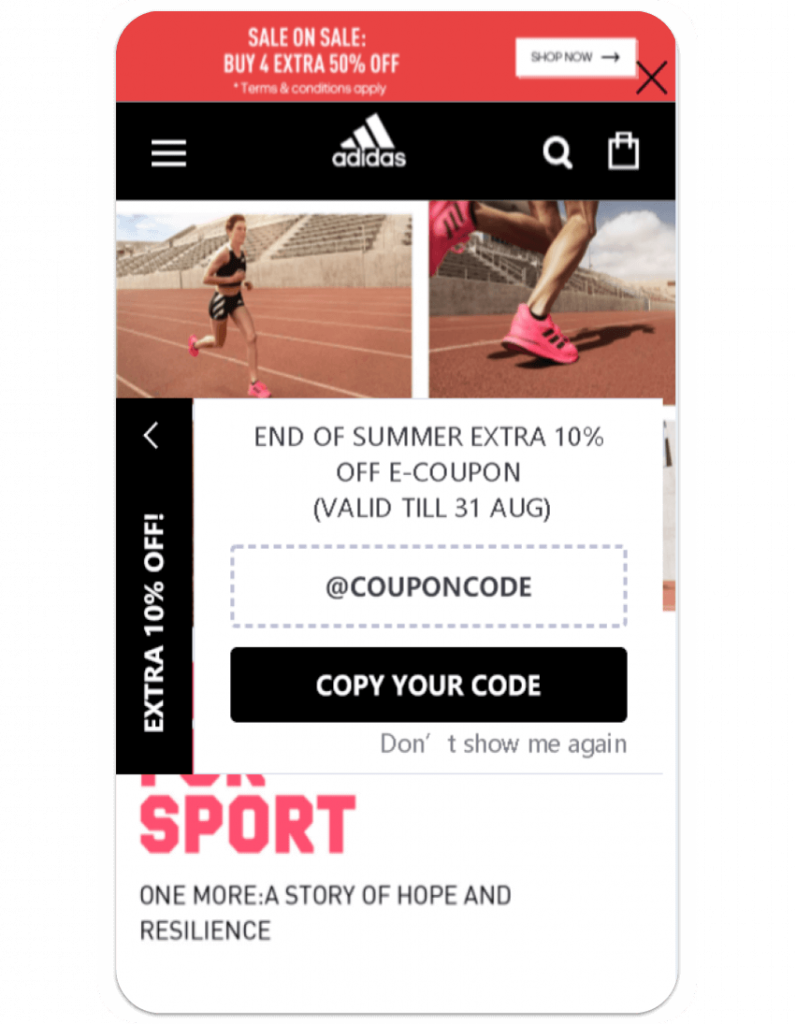
They also A/B tested different coupon versions to find the ones that had the highest impact on conversion rates and revenue. The result was a 259% increase in AOV from new users in one month and a 35.5% conversion rate boost from returning users.
Second, they started scaling their personalization efforts across other areas of their site. For example, Insider’s Category Optimizer enabled Adidas to deliver a better navigation experience on smaller screens by tailoring how categories were presented to each customer.
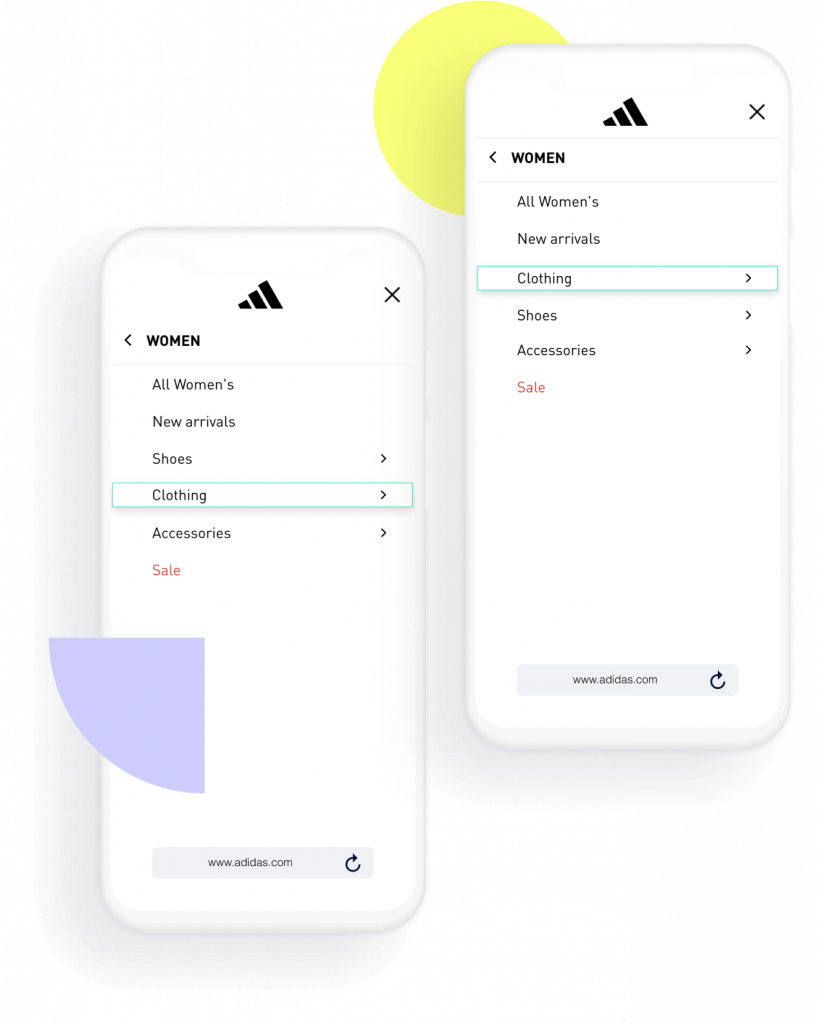
This personalization technique led to a 50.3% increase in mobile conversion rates.
Adidas also used Insider’s Smart Recommender to make it easier for customers to discover and purchase new products. Specifically, they started showing relevant products to each customer based on their browsing history, intent, and behavior.
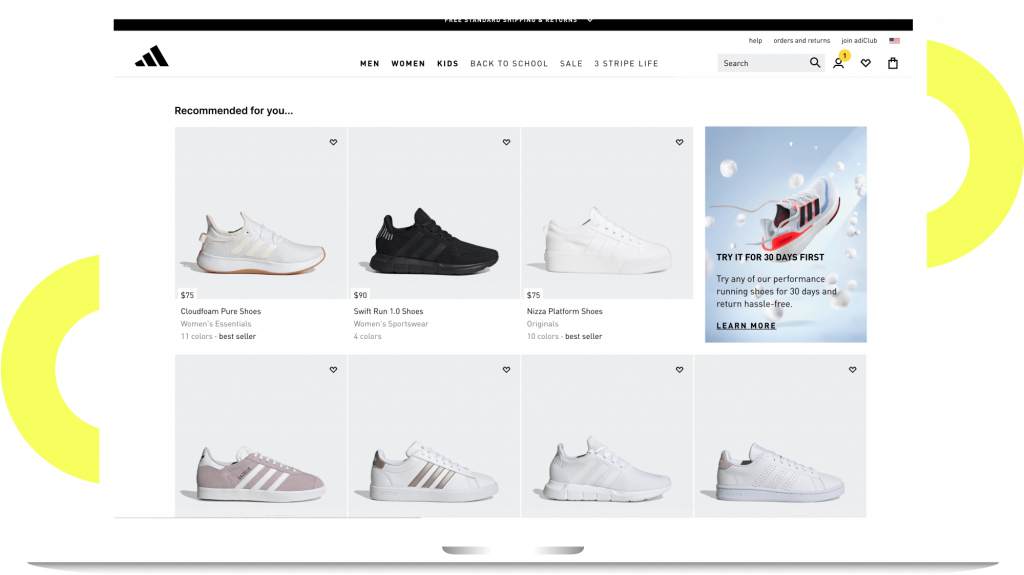
This highly personalized approach led to a 13% increase in homepage conversions in one month and a 7% conversion rate increase on cart pages.
2) How Sapphire achieved a 53x ROI
Sapphire is a leading Pakistani fashion retailer with over 42 stores and 5,000 employees. The brand is committed to providing high-quality products and exceptional customer experiences both in-store and online.
The brand’s marketing team needed a way to personalize the on-site experience at scale, without a heavy reliance on dev or IT support. Sapphire decided to start their partnership with Insider due to our platform’s plethora of no-code templates and advanced personalization functionalities.
First, they launched Insider’s ready-made, personalized banners across its homepage. The banners reflected new product launches and highlighted events and national holidays, including Valentine’s Day and peak season campaigns, depending on the time of year and customer location.
Thanks to Insider’s templates, Sapphire was able to build, personalize, and launch these homepage banners fast, without needing to wait for constant technical assistance. These resulted in:
- A 244% increase in conversions.
- A 93% increase on AOV.
- A 53x ROI.
Next, Sapphire’s team had to tackle the challenge of product discovery. With thousands of products in online stores, customers often struggled to find the right products quickly. As a result, they’d regularly use the search bar and add products to their cart without browsing anything else or directly bouncing from the site.
Our suggested AI-powered Smart Recommender to improve product discovery. The Sapphire team added the recommender on every product page to showcase additional relevant items that aligned with the customers’ interests.
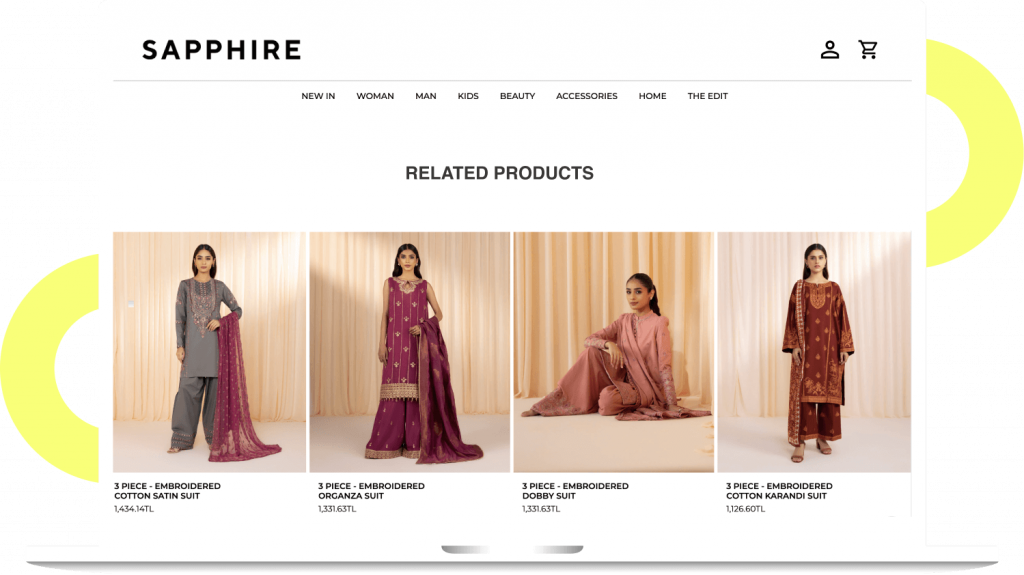
They were able to generate a 12x ROI just by implementing these personalized product suggestions.
With their on-site personalization goals successfully completed, Sapphire is looking to incorporate more channels into its marketing strategy, including email and SMS, using Insider’s omnichannel customer journey builder.
3) How Samsung generated a 275% conversion rate uplift
Samsung is a global appliance and consumer electronics corporation headquartered in South Korea. The company has been the world’s largest manufacturer of mobile phones and smartphones since 2011.
Samsung needed a way to stand out in the crowded smartphone market during the launch of their latest Galaxy Note. Their marketing team knew this would require delivering a personalized omnichannel experience for customers that would drive excitement for the product.
Our team recommended using a personalized omnichannel messaging strategy to target those people interested in competitor devices and lead them to a specific Galaxy Note landing page.
Samsung used Architect to employ this strategy. Additionally, users who displayed an interest or added the Galaxy Note to their cart, received relevant web push notifications to encourage them to return to the site and complete their purchase.
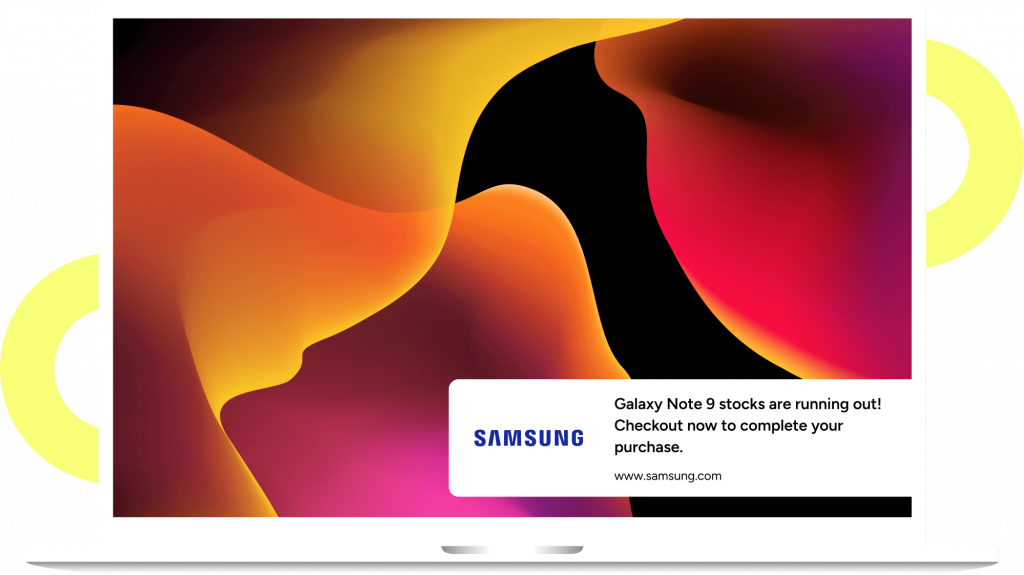
This strategy resulted in a 14% increase in click-through rates, a 24% increase in conversion rates (CVR), and a 275% overall contribution to CVR.
During the launch campaign, Samsung’s team also noticed a sharp drop-off in conversions on their product and category pages. To combat that, they needed to do a better job of guiding users to find what they were looking for faster.
Insider’s Web Overlays and Category Optimizer helped do just that. These personalization tools enabled Samsung to make product discovery easier, as well as drive revenue and customer loyalty.
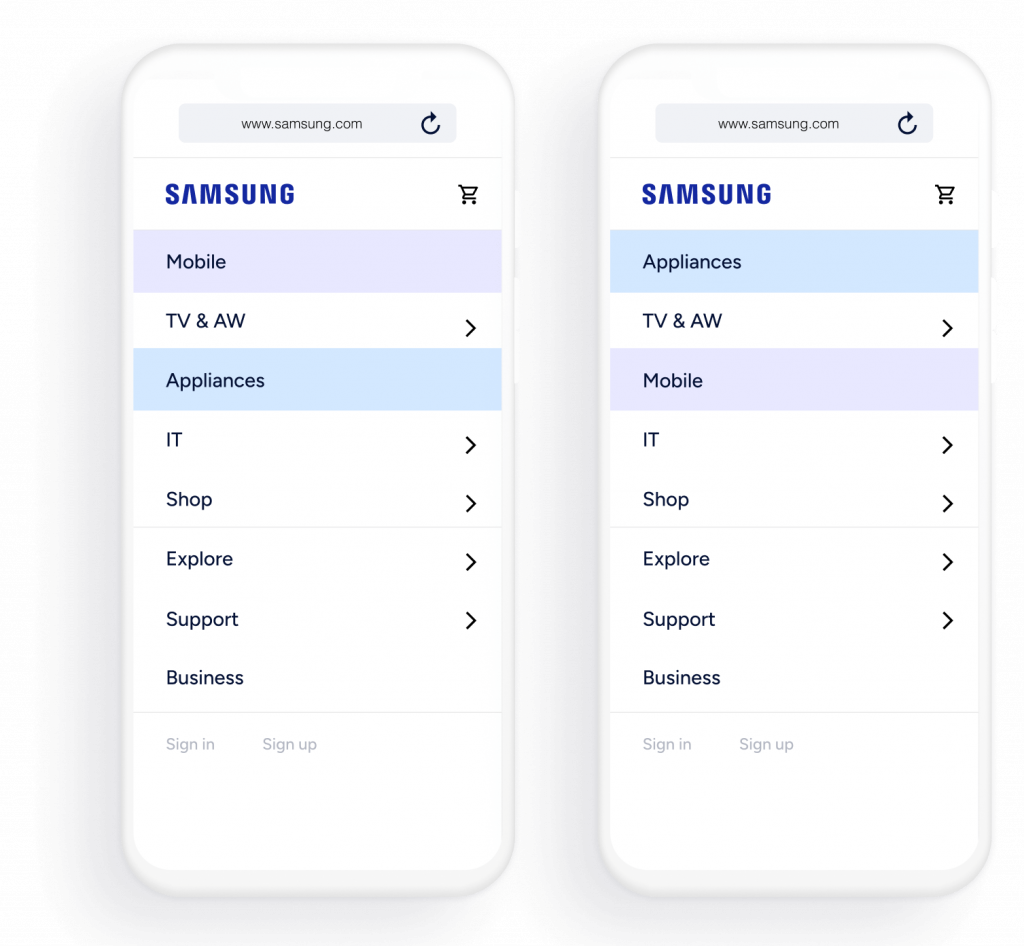
Specifically, category optimization increased CVR for the Galaxy Note campaign by 10%, while 9% of the total sales were generated thanks to the web overlays. All of these personalization tactics combined yielded a massive 275% CVR increase.
Samsung is now looking to expand its personalization strategy to incorporate Insider’s site search tool, EUREKA. They want to leverage the tool to reduce the customers’ path to purchase and improve discovery across its vast range of products even more.
Achieve true personalization at scale with Insider
Insider is the ideal solution for enterprise and mid-sized companies looking to create successful personalization campaigns at scale and across channels.
Our platform’s advanced personalization tools let you tailor every touchpoint in your customers’ journeys at scale — including your website, mobile app, emails, messaging channel communications, and more. That’s why our solution has been ranked among the best:
- Personalization engines (by Gartner)
- Omnichannel marketing platform (by IDC).
- eCommerce personalization solutions (by G2).
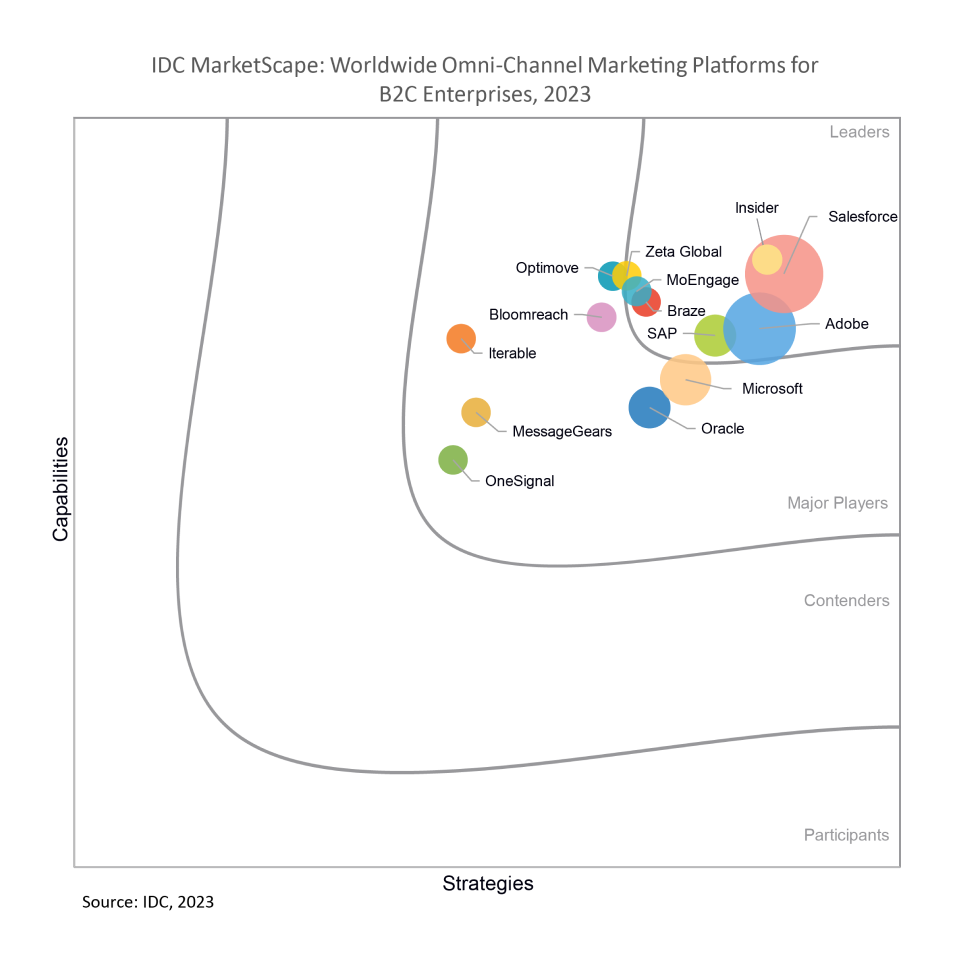
Our platform’s easily customizable templates also let you launch personalization campaigns and experiments with minimal effort and no reliance on technical teams. As a result, you can drastically speed up your time to value and ROI.
Additionally, Insider can:
- Aggregate your customer data and give you an accurate, 360-degree view of each customer.
- Unify your martech stack and enable you to build, automate, and analyze campaigns across all channels from one platform.
- Predict customer behaviors with our AI-powered intent engine, such as the likelihood to purchase or engage on a specific channel, discount affinity, and more.
- Improve metrics that can drastically affect your bottom line, like customer retention, AOV, CLTV, and acquisition costs.
- And much more!
Lastly, our experienced support team will help you get started as quickly as possible and ensure you’re leveraging the right data sources and personalization tools for your needs.
Click here to book a demo with our team and learn how Insider can help you reach your business goals.
Frequently Asked Questions
The two key methods of personalization are:
1. Rule-based personalization: Using predefined rules and segments, e.g., showing product recommendations based on last purchase or demographic data.
2. AI-driven personalization: Leveraging machine learning and predictive models to analyze vast data points, anticipate intent, and deliver real-time, dynamic, individualized experiences across channels.
Personalization is brand-driven, where the system or platform uses data and algorithms to tailor content or product recommendations for each customer automatically. Customization is often user-driven, where customers actively select preferences or modify the shopping experience themselves.
Personalization at scale is difficult because it requires:
1. Integrating and unifying customer data from multiple siloed sources.
2. Delivering consistent, individualized experiences across thousands or millions of customers and multiple channels.
3. Managing privacy restrictions and data accuracy.
4. Automating complex campaigns that adapt in real time without overwhelming marketers.
There are several benefits of delivering personalization at scale:
1. Higher conversion rates by showing customers relevant products and offers.
2. Increased customer engagement and satisfaction through tailored experiences.
3. Improved customer lifetime value (CLTV) and retention due to more relevant interactions.
4. Better marketing ROI by reducing wasted spend on irrelevant messaging.
You need to unify customer data with a customer data platform (CDP) to build accurate 360-degree profiles. Using a unified marketing platform like Insider that allows seamless personalization across channels (web, email, SMS, push, ads). Leverage AI and machine learning to automate dynamic content, predictive recommendations, and campaign optimization.
Start small with key data points and iterate based on real results, continually testing and refining campaigns. Empower marketers with easy-to-use templates and no-code campaign builders to scale without heavy IT reliance.



















